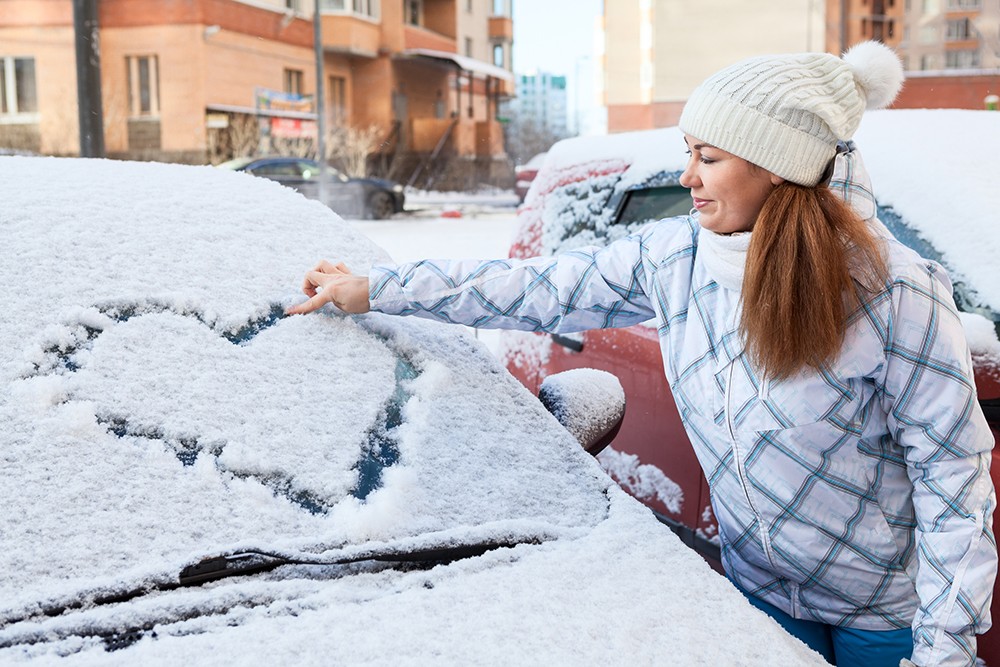
Harsh January weather which descended across North America–from Canada to Texas and Florida–can lead to February shakes, shimmies, squeaks and squeals for your favorite ride.
Give your vehicle the love it deserves as your family prepares for February outings. Whether going on a winter sojourn or simply heading across town, prevent unforeseen breakdowns by taking stock of your vehicle’s performance.
1. Test your vehicle’s battery
Avoid getting stranded in a winter storm with a dead battery. Instead of crossing your fingers and hoping your car’s battery won’t die on you, check the battery’s voltage. In winter, your car requires more power to start up. Plus, cold temperatures can be a catalyst for an already failing battery, so it’s good to know how much life is left in your battery.
A good rule of thumb is to replace your battery if it is three years or older. In addition to getting your battery checked, be sure to also check the charging system.
2. Tire wear and stopping performance
Tires might be one of the most important things to check for your car’s winter maintenance. So much so, that states like Colorado passed a Traction Law stating all motorists are required to have either a 4WD or AWD vehicle and 3/16” tread depth.
Tires with good tread are key to handling the winter roads of snow, slush and ice. Good tread is the difference between your car’s ability to stop on slippery surfaces.
For places with heavy snowfall and steep grades, consider investing in winter tires. In addition to providing extra traction, they help when stopping in severe weather conditions. And don’t forget about your spare tire. Look for cracks and degrading tread.
3. Tire pressure
Tires lose or gain one to two PSI (pounds per square inch) for every 10℉ changes in temperature. This becomes particularly important during winter road trips. Low tire pressure places may cause sidewall damage and blowouts.
4. Wheel alignment
Does your vehicle drift when you hold the wheel lightly?
The problem may involve wheel alignment, which can be thrown off by hitting potholes or other road obstructions. In winter, ice-filled cracks and snow-covered curbs may be the culprits. Or the problem may be caused by worn out ball joints.
Left unattended, alignment problems can damage your vehicle's tires permanently and show up as a wobbly wheel.
5. Replace worn brake pads
When taking your car in for its scheduled maintenance, have your car care professional look at your brake pads. A visual inspection can identify any wear and tear, an indication that new pads might be needed. Some signs you can look for are screeching noises when hitting the brakes or brake dust on the front wheels.
6. Check weak fluid lines
Water is the number one enemy of the vehicle’s fluid lines. When cars are driven repeatedly in cold, snowy and wet conditions, this can affect the rubber hoses and metal lines of the braking system. Most brake fluids can handle extreme cold weather, but if there is damage to the fluid lines, there is a potential for water to seep in and freeze.
7. Check critical fluids
Brake fluid: Fluid tends to deteriorate over time, so it is always a good idea to get it inspected. While inspecting, be sure to check fluid levels and top off when necessary.
Coolant or antifreeze: When it gets cold outside, fluids such as coolant and antifreeze tend to thicken and could affect the proper functioning of your vehicle.
Engine oil: Always check engine oil before leaving on an excursion during February. Regular oil changes are an important part of your car’s winter maintenance and performance.
For harsher winter climates, consider asking about switching to synthetic oil. Synthetics are less affected by colder temperatures and often results in a better fuel economy. But do note, if you make the change, be sure to stay with it as you can’t switch back and forth.
8. Replace wiper blades
Fully functioning wiper blades are crucial for winter driving. Snow, sleet, mud and dirt can all end up on your car’s windshield, impeding your visibility. If you don’t have good wipers, it might be an accident waiting to happen.
9. Inspect squeaks and squeals
Engine belts should never squeal but sometimes cold weather can be the culprit. These sounds may indicate a deteriorating serpentine belt. For older models with multiple drive belts, the squeals may point to loose belts on the air conditioning compressor or power steering pump.
10. Halogen bulbs and LED headlights
Check headlight and taillight bulbs next time you drive your vehicle at night. Do the rear brake bulbs appear dim? Are headlight beams dull on the road? Do headlight beams need to be adjusted?
Replacement bulbs are an inexpensive way to improve road safety. Make sure they all are operating in good condition. Look for cracks and brightness. Traditional bulbs of your vehicle tend to dim considerably within just a year.
LED lights typically last much longer than traditional incandescent or halogen bulbs. Yet, problems may still occur and LED lights should be inspected as part of your vehicle’s routine maintenance.
11. Schedule a winter maintenance inspection
The best way to ensure the steps above are completed is to schedule a winter maintenance inspection with your car care professional. A winter safety inspection is critical in ensuring your car is running at its best. When you cover the basics, you can head off issues that might lead to a costly repair or being stranded roadside.
Copyright © 2024 by Sensible Driver. All rights reserved.